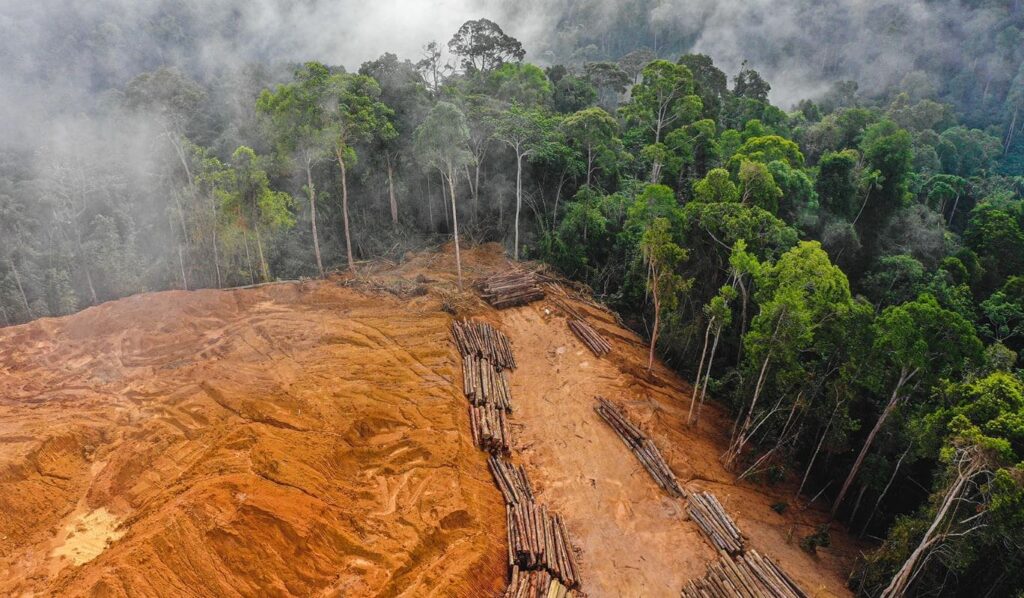Introduction
Today, deforestation is one of the main environmental issues because it leads to global warming and climate change. The clearing of forests causes an increase in carbon dioxide (CO2) levels in view of the fact that fewer trees are left to absorb this gas. Trees are important in that they act as a major carbon sink. For instance, addressing this challenge could be compared to writing a rhetorical analysis essay about environmental policies. Deforestation contributes to rising CO2 levels since it reduces carbon sequestration, releases more of this greenhouse gas, and leads to forest loss.
Carbon Sequestration
Deforestation causes an increase in levels of CO2 because it negatively affects the capacity of trees to remove this gas from the air. Carbon sequestration involves absorbing CO2 from the atmosphere for photosynthesis and storing much of this gas in the trunks and roots of trees.1 In this case, cutting down forests adversely affects the ability of trees to reduce high levels of this gas. Deforestation is detrimental since a high percentage of CO2 found in trees is subsequently released back into the environment.2 Consequently, CO2 levels continue to increase, exacerbating the problem of global warming due to the accumulation of this gas. Therefore, deforestation should be discouraged since it reduces the process of carbon sequestration.
1. UCS, “Tropical Deforestation and Global Warming,” Union of Concerned Scientists, 2021, par. 1, accessed July 20, 2023, https://www.ucsusa.org/resources/tropical-deforestation-and-global-warming.
2. UCS, “Tropical Deforestation,” par. 2.

Increased CO2 Emissions and Low Absorption
Research findings show the extent to which deforestation leads to an increase in levels of CO2. For instance, scientists have found that deforestation is responsible for approximately 30% of the total amount of CO2 released into the atmosphere between 1850 and 2021.3 Basically, clearing or burning forests leads to the destruction of carbon sinks and increases the level of this gas. Research findings also show that forests account for the absorption of approximately 2 billion metric tons of CO2 annually, as per the analysis of data collected since 2000.4 This data points to the fact that deforestation can lead to the release of tons of this gas, which had already been removed from the air. As a result, the problem of rising CO2 levels can be addressed through appropriate measures, such as afforestation and reforestation.
3. Jerry Melillo, “Forests and Climate Change,” Massachusetts Institute of Technology, 2021, par. 3, accessed July 20, 2023, https://climate.mit.edu/explainers/forests-and-climate-change.
4. Melillo, “Climate Change,” par. 2.
Loss of Forests and High CO2 Levels
Forest cover has been declining due to deforestation, subsequently resulting in an increase in CO2 levels. While trees and other plants still account for approximately 30% of the total land area on Earth, about 420 million hectares of forests have been cleared since 1990.5 Human activities increase the amount of CO2 in the atmosphere and destroy trees that would absorb this gas. If the tropical deforestation happening today is assumed to be a country, the amount of CO2 that the state emits will make it be ranked as the third highest source of this gas after China and the United States (US).6 It means that deforestation is a major cause of rising CO2 levels at the global scope. Hence, a direct correlation exists between deforestation and the amount of CO2 in the air.
5. Christina Nunez, “Why Deforestation Matters — And What We Can Do to Stop It,” National Geographic, 2022, par. 5, accessed July 20, 2023, https://www.nationalgeographic.com/environment/article/deforestation.
6. Nunez, “Why Deforestation Matters,” par. 14.
Conclusion
Deforestation leads to an increase in CO2 levels because it negatively affects carbon sequestration, causes the emission of more of this gas, and results in forest loss. Clearing forests means that there are fewer trees left to remove this gas through carbon sequestration. Furthermore, many trees cut down release carbon back into the air and contribute to rising levels of this gas. Forest loss has devastating effects since millions of hectares have been cleared, emitting huge amounts of CO2 that can be ranked third, just below China and the US. Thus, deforestation is a major cause of rising CO2 levels and needs to be addressed through afforestation and reforestation.
Bibliography
Melillo, Jerry. “Forests and Climate Change.” Massachusetts Institute of Technology, 2021. Accessed July 11, 2023. https://climate.mit.edu/explainers/forests-and-climate-change.
Nunez, Christina. “Why Deforestation Matters — And What We Can Do to Stop It.” National Geographic, 2022. Accessed July 11, 2023. https://www.nationalgeographic.com/environment/article/deforestation.
UCS. “Tropical Deforestation and Global Warming.” Union of Concerned Scientists, 2021. Accessed July 11, 2023. https://www.ucsusa.org/resources/tropical-deforestation-and-global-warming.


